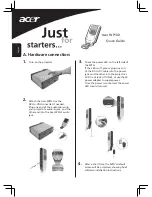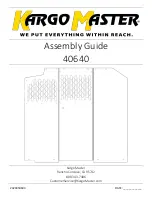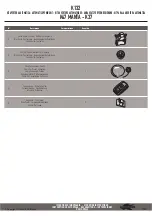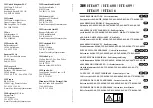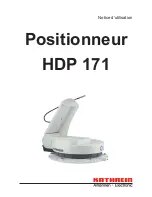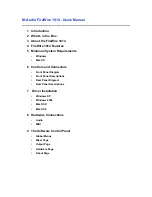
3-7
62-11848
3.10 PRODUCT LOADING
Before Loading
• Pre-cool the inside of the insulated body by lowering the temperature for about 15 minutes.
• Evacuate the humidity existing inside the box by carrying out a manual defrost. This can only take place
when enabled by the defrost thermostat (box temperature lower than 37°F (3°C) during pull down and 46°F
(10°C) during heating.
• Evaporator fans are protected by safety grills. In the event of heavy duty use of the unit, ice can accumulate on
the grills. It is therefore recommended to clean them regularly by means of a small brush. This operation MUST
be done only after the unit has been SHUT DOWN.
When Loading
• Turn the unit off!
• It is recommended to open doors as little as possible to avoid the intake of hot air and humidity.
• Select the temperature by means of the thermostat, according to the transported goods.
• Check the internal temperature of the goods being loaded (using a probe thermometer).
• Take care not to obstruct the air intakes on the evaporator section and the ventilation ducts.
• Leave a free space of about 2 to 3 inches between the load and the front wall.
• Leave a free space of about 8 inches between the top of the load and the roof.
• Leave a free space of about 8 inches between the floor and the load (gratings, pallets).
• Do not forget to close the doors.
• Before closing the doors, check your load once more and see that nobody is shut inside the box.
NOTE
For stationary utilization, we recommend to place the vehicle in the shade.
CAUTION
!
Never allow your unit to sit more than a month without running.
Proper air circulation in the insulated box refers to air that can move around and through the load. This is a critical
element in maintaining product quality during transport. If air cannot circulate completely around the load, hot spots
or top-freeze can occur.
The use of pallets is highly recommended. Pallets, when loaded so air can flow freely through the pallets to return
to the evaporator, help protect the product from heat passing through the floor of the truck. When using pallets, it is
important to refrain from stacking extra boxes on the floor at the rear of the truck, as this will cut off the airflow.
Product stacking is another important factor in protecting the product. Products that generate heat, such as fruits and
vegetables, should be stacked so that the air can flow through the product to remove the heat. This is called "air
stacking" the product. Products that do not create heat, such as meats and frozen products, should be stacked tightly
in the center of the box.
All products should be kept away from the sidewalls and ceiling of the cargo area to allow air to flow between the
body and the load. This will prevent heat from filtering through the walls and affecting the product.
It is important to check the temperature of the product being loaded to ensure that it is at the correct temperature
for transport. The refrigeration unit is designed to maintain the temperature of the product at the temperature at
which it was loaded; it was not designed to cool a warm product.































